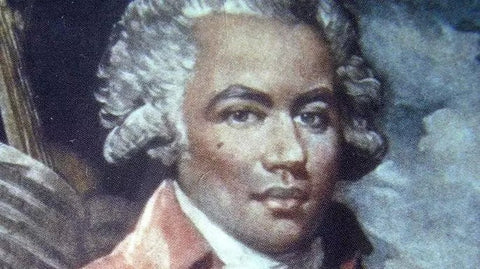From the mid-16th century to the 18th century, there lived in Europe three swordsmen whose skills were legendary. What makes these men remarkable is that their skill at dueling was the only commonality these men shared. They were each incredibly different in their temperaments, skills, and chosen paths in life.
Achille Marozzo—The Renaissance Fencing Master

The first legend was Achille Marozzo, an Italian fencing master who followed the fencing tradition of the Bolognese school. He is remembered today for his treatise Opera Nova dell’Arte delle Armi, which mostly covers how to use various weapons or guards in tandem with a sword. Today, this work serves as a window into 16th century fencing styles and theory and is studied by many historical fencing groups.
There is not much known about his personal life. What little we know about him comes mainly from his esteemed work. From lines such as “You must never attack without defending, nor defend without attacking” we can discern that he was a fairly calculating individual. We know he studied under Guido Antonio Di Luca, who trained a great many warriors. Marozzo became a teacher in his own right, as one contemporary noted that he “had trained an immense number of valiant disciplines.”
Donald McBane—The Scottish Duelist Extraordinaire

Donald McBane was really a character. He was a womanizer and had the ability to get into trouble almost no matter what he did. Dueling for him was a double-edged sword – it got him into trouble as often as it got him out of it. If it weren’t for the fact that he was often well-liked by those above him, he would have been unlikely to have achieved as much as he did.
Donald first learned swordsmanship when the elder soldier assigned to him regularly “dipped” into his wages. Donald paid for private instruction from a sergeant, then, as was the custom of the time, Donald challenged the elder soldier to a duel, which he then promptly lost. After taking more lessons, Donald, won the duel and became master of his and the other soldier’s wages.
His exploits after this are too much to extol here, but suffice it to say, he had many adventures replete with scrapes, scuffles, and close calls. He did marry and had two kids, but his roving eye never stopped, and he consistently had many adventures with other women and became a brothel owner. Eventually, at the age of 63, he resolved to stop fighting and “repent of my former wickedness.”
Joseph Bologne, Chevalier de Saint-Georges—The Gentleman Fencer

Possibly the most interesting of the 3, Joseph Boulogne, better known as Saint George, was notable for being a half-African half-French aristocrat. Born the illegitimate son of a Frenchman and African slave, he was taken from his birthplace of Guadeloupe (an island in the Caribbean) to France at a young age. While his maternity disallowed him from being considered nobility, his father acknowledged and supported him throughout his life, an extreme rarity due to the racial divisions of the time.
Saint George grew up with an excellent education, learning not only fencing but also horseback riding, literature, and science. Accounted a dashing man with a fierce prowess of the sword, he gained skill quickly, with one famed Italian fencer predicting that he would become the best fencer in Europe. Not skilled only with the sword, he also was an accomplished violinist. While not considered one of the great composers, one of the greats, Mozart, based a piece on a melody Saint George wrote.
Saint George grew up with close ties to the Aristocracy. His father was very close to King Louis XV, and George himself developed a close friendship with Marie Antoinette. However, he developed sympathies for the growing revolutionary movement, though these ties made it difficult for the revolutionary leaders to trust him. As well as his involvement with the revolution, he also sympathized with the growing anti-slavery movement, which irritated slave owners. He lived to see slavery abolished but died soon before it was reimposed by Napoleon.
source https://www.bladespro.co.uk/blogs/news/3-legendary-european-swordsmen

No comments:
Post a Comment